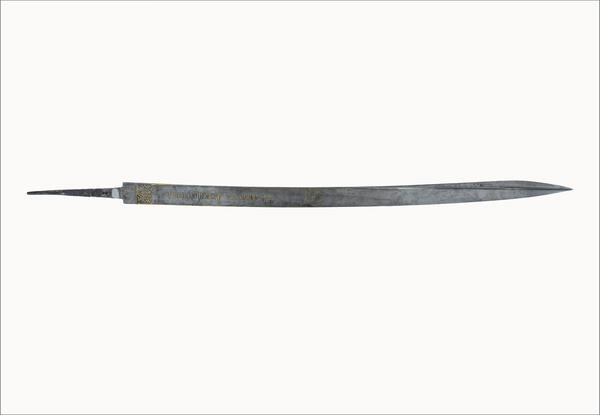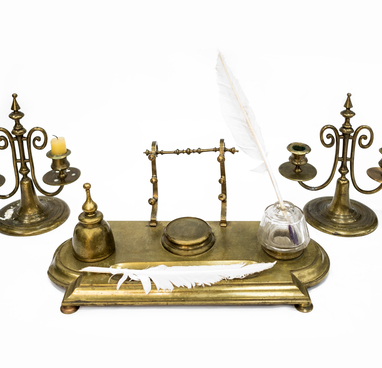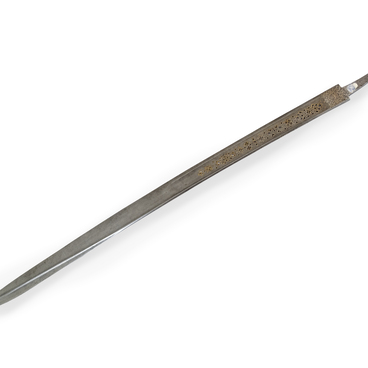By the beginning of the 19th century, the government of the Russian Empire faced the challenge of building a blade weapons factory. The Russian army and navy required a huge amount of blade weapons and firearms, and Emperor Alexander I approved the idea of creating a special weapons factory. The Zlatoust Ironworks was chosen as the site for the construction of the factory.
In 1873, the Zlatoust Arms Factory received an order to make 27 naval broadswords for officers who had taken part in the voyage of the frigate Svetlana. For the first time, the ship was talked about in June 1856, when a contract agreement was signed between the Naval Ministry of the Russian Empire and the French shipyard “Collas at Comp”. The contract stipulated the construction of a frigate and a corvette.
The cost of building the frigate was estimated at 2,800,000 francs, which was approximately equal to 705,000 silver rubles. On October 13, 1856, the official ceremony of laying the keel of the ship took place. In February of the following year, the installation of the iron framework was almost completed. On May 3, 1858, the frigate was launched.
French craftsmen used the wood of oak, teak, mahogany, and pine to build the hull of the frigate. Emperor Alexander II personally approved the name for the ship — “Svetlana”. In the period from 1871 to 1873, the ship made a round-the-world trip. The son of Emperor Alexander II, 21-year-old captain-lieutenant of the Guards naval crew, Grand Duke Alexei Alexandrovich took part in the long voyage.
In memory of the campaign, he ordered naval broadswords of the 1858 model for officers of the frigate at the Zlatoust Arms Factory. The order was entrusted to the best etching and gilding craftsmen of the Zlatoust Arms Factory — Mikhail Stepanovich Petukhov and Alexander Petrovich Agarkov. Etched and gilded inscriptions “Frigate Svetlana” and “From H.R.H. Alexei Alexandrovich” were put on the blade in ornamental frames.
On the tang and shank of the blade, one can see the stamps of the craftsmen who participated in the manufacture of the sword. The blade was transferred to the museum fund in 1960 from the Chelyabinsk Regional Museum of Local Lore.
In 1873, the Zlatoust Arms Factory received an order to make 27 naval broadswords for officers who had taken part in the voyage of the frigate Svetlana. For the first time, the ship was talked about in June 1856, when a contract agreement was signed between the Naval Ministry of the Russian Empire and the French shipyard “Collas at Comp”. The contract stipulated the construction of a frigate and a corvette.
The cost of building the frigate was estimated at 2,800,000 francs, which was approximately equal to 705,000 silver rubles. On October 13, 1856, the official ceremony of laying the keel of the ship took place. In February of the following year, the installation of the iron framework was almost completed. On May 3, 1858, the frigate was launched.
French craftsmen used the wood of oak, teak, mahogany, and pine to build the hull of the frigate. Emperor Alexander II personally approved the name for the ship — “Svetlana”. In the period from 1871 to 1873, the ship made a round-the-world trip. The son of Emperor Alexander II, 21-year-old captain-lieutenant of the Guards naval crew, Grand Duke Alexei Alexandrovich took part in the long voyage.
In memory of the campaign, he ordered naval broadswords of the 1858 model for officers of the frigate at the Zlatoust Arms Factory. The order was entrusted to the best etching and gilding craftsmen of the Zlatoust Arms Factory — Mikhail Stepanovich Petukhov and Alexander Petrovich Agarkov. Etched and gilded inscriptions “Frigate Svetlana” and “From H.R.H. Alexei Alexandrovich” were put on the blade in ornamental frames.
On the tang and shank of the blade, one can see the stamps of the craftsmen who participated in the manufacture of the sword. The blade was transferred to the museum fund in 1960 from the Chelyabinsk Regional Museum of Local Lore.





